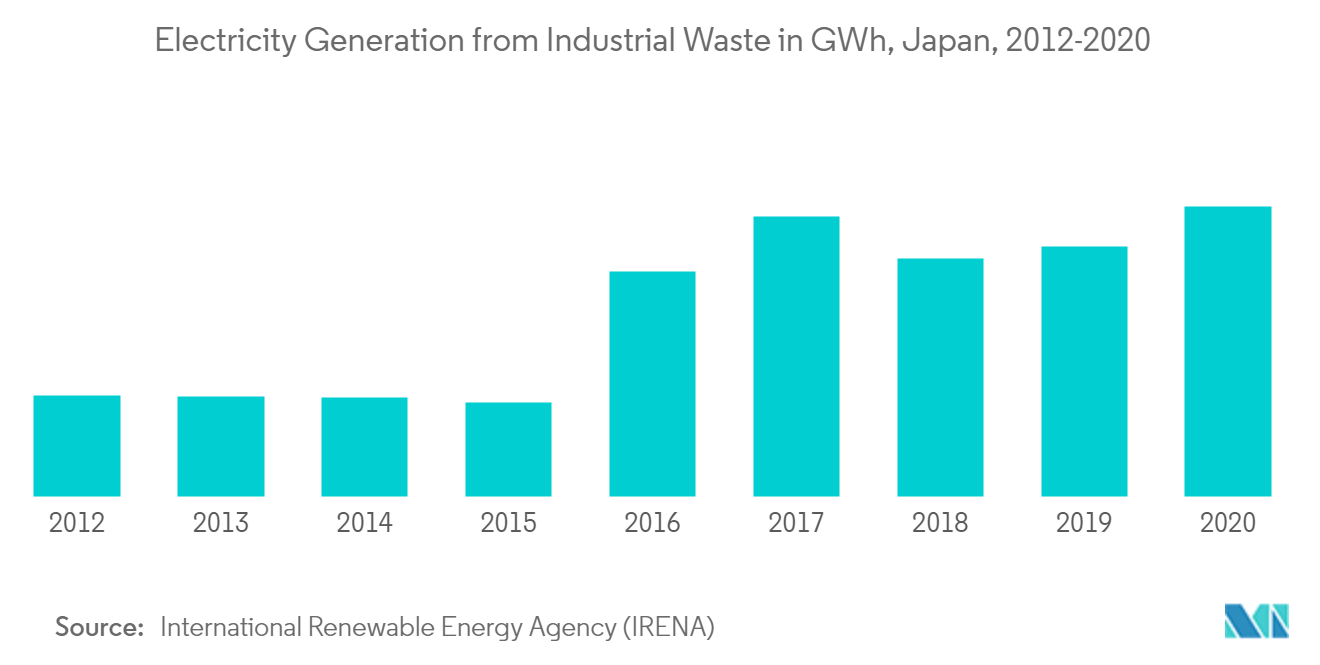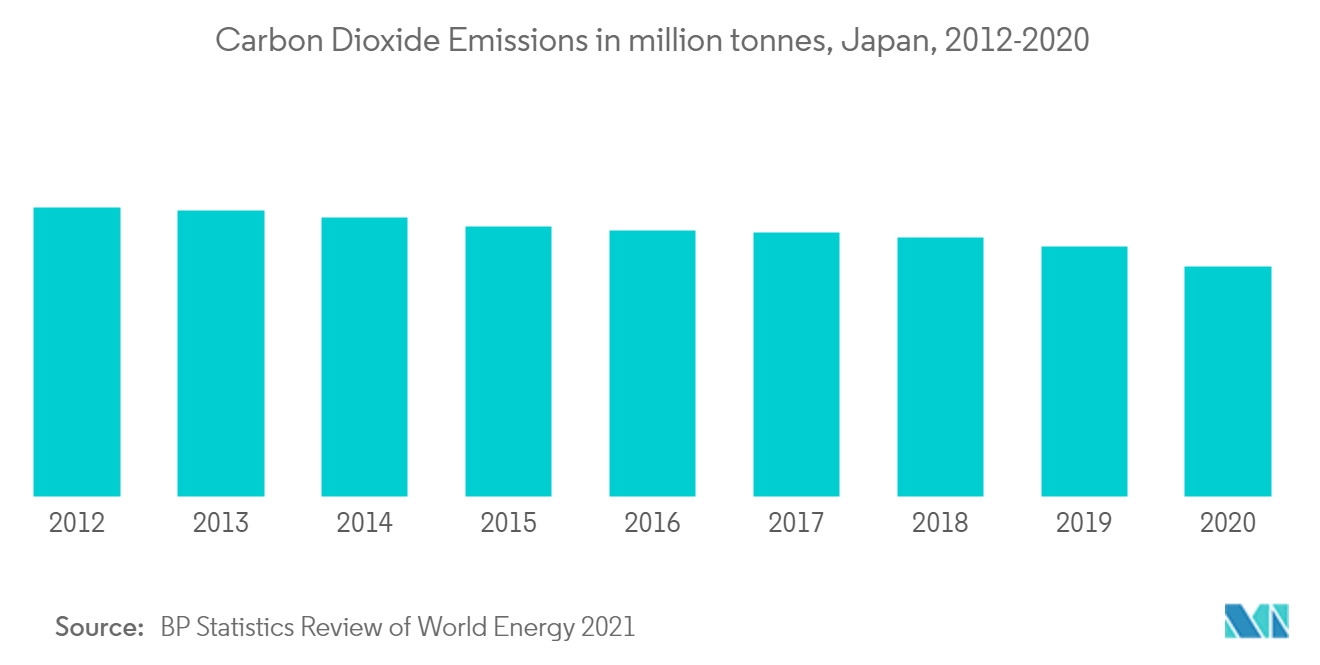Market Trends of Japan Waste to Energy Industry
This section covers the major market trends shaping the Japan Waste to Energy Market according to our research experts:
Thermal Technology to Dominate the Market
- Japan is a leading country with the most modern types of thermal treatment plants capable of processing millions of tons of waste every year. As of 2020, Japan was one of the leading countries worldwide in terms of the percentage of waste utilized in waste-to-energy (WTE) facilities, burning more than 80% of its MSW in energy recovery systems.
- The country has focused on thermal-based WTE technology since the 1960s. The WTE industry has thrived in Japan because there is little room for landfills, and burning waste has been considered a better solution.
- As of 2020, the electricity generated from industrial waste (18522 GWh) was comparatively higher than that of electricity generated from municipal waste (1824 GWh), thus making industrial waste much more useful to produce energy.
- Moreover, in December 2020, Mitsubishi Heavy Industries Environmental & Chemical Engineering Co. Ltd (MHIEC) won a contract with the Kashima Regional Administration Association to design and build a thermal-based waste-to-heat management facility planned for construction in Kamisu city in Ibaraki Prefecture. The contract is valued at JPY 13.59 billion, with completion scheduled for the end of March 2024.
- Factors such as industrialization and economic development also contribute toward MSW generation, which is further expected to influence the growth of the thermal-based waste to energy market in Japan.

New Incineration Technologies for Reduction of Harmful Emissions Driving the Market Demand
- The incineration plants for solid waste generate harmful emissions, like dioxins, carbon dioxide, sulfur oxide, and nitrogen oxide. Technologies related to high-efficiency power generation and safe operation, such as automatic incineration devices and automatic cranes, have been developed to reduce the harmful emissions in this process.
- The Japanese stocker furnace technology is a low-air incineration method that aims for high-efficiency power generation, reduced harmful emissions, removed acidic gas, and recycled incinerated ash. The technologies applied to reduce dioxin generation are exhaust cooling, bag filters, and activated coal that absorbs and eliminates dioxin.
- The conventional stoker furnace's highly efficient technology enables electrical generation from recovered heat waste and makes it an effective measure against greenhouse emissions.
- An increase in the new incineration technologies in Japan has reduced CO2 emissions. However, Japan's overall carbon dioxide emissions decreased from 1158.4 million metric ton in 2018 to 1027.0 million metric ton in 2020.
- Hence, increasing investments and advancements in the new incineration technologies across Japan are expected to drive the waste to energy market during the forecast period.

